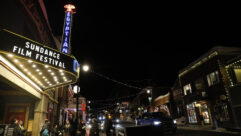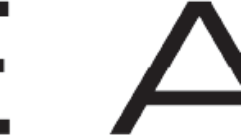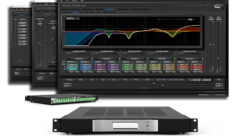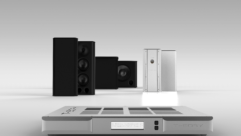
Dolby Lake Processor
Jul 1, 2007 12:00 PM,
By John McJunkin
Information-rich front panel and control software join for easy loudspeaker management.

In September of 2003, Dolby Laboratories acquired Lake Technology, developer of the much-vaunted Lake Contour loudspeaker processor. In February of 2006, Dolby Labs introduced the Dolby Lake Processor, establishing the company as an important player in the world of live sound.
I recently got a chance to test drive a Dolby Lake Processor in the live-sound venue of the Conservatory of Recording Arts & Sciences in Gilbert, Ariz., (special thanks to Cory Patterson and Keith Morris at the conservatory). The DLP, as it is commonly called, supports up to four-in by 12-out signal processing for loudspeaker applications and eight-in by eight-out for EQ applications. This allocation can be split to provide a 4×4 EQ with a loudspeaker 2×6 configuration, as well.
In all, five principal configurations are available from Dolby: the LPD, a fundamental box with digital-only I/O; the LP4D4, with four analog inputs and four analog outputs; the LP8D8, with eight analog inputs and eight analog outputs; the LP4D8, with four analog inputs and eight analog outputs; and the LP4D12, with four analog inputs and 12 analog outputs. The unit I test drove featured the LP4D12 configuration. Strictly speaking, there are five additional configurations available based upon the ones I’ve described — with either analog inputs or analog outputs, but not both.
Last year, when I saw the DLP for the first time, I was struck with its truly unorthodox front panel. It consists of four circular input/display modules — which Dolby calls portals — each with a ring of 16 pushbuttons, two arrow keys, an M/E button, a 3×10 daylight-readable LCD character display, and 2×104 circular meter segments. The displays are quite clever, providing a wealth of information, including limiting gain reduction and the resultant output for each frequency range.
The front panel also features an RJ-45 Ethernet port; an infrared transceiver; an ambient-light sensor; and mute-enable, meter, menu, and power buttons. The buttons on the front panel are backlit with LEDs that change color, displaying red or green depending upon the button’s current status. As I said, a quick glance at this panel offers a wealth of information, but I would nevertheless recommend using the Dolby Lake Controller software, which provides even more information and direct control.
On the back panel, a base platform section is common to all DLPs, regardless of I/O configuration. It houses the power input, Toslink optical S/PDIF I/O, AES/EBU I/O (in DB-25 format), Ethernet connections, MP I/O, and a word clock BNC connection, along with a memory slot. The MP I/O and memory slot features will be implemented in future versions of the system. Analog I/O is accomplished with XLR connectors, the number of which is contingent upon the configuration. Dolby’s analog I/O cards feature a proprietary Iso-Float ground isolation system that eliminates ground loops and can be switched on or off.
Dolby chose to enable the Dolby Lake Controller software included with its DLP to control not only the DLP, but also the Lake Mesa Quad EQ and the Lake Contour processor — a wise decision in my estimation.
In loudspeaker processor configuration, the DLP passes a signal through the following chain: input mixing, gain, EQ, delay, crossover, output EQ, level, and output routing. In system equalizer configuration, the signal passes through the following chain: input mixing, gain, EQ, delay, HPF/LPF, output levels, and output routing. Each processor channel can derive its input from any combination of physical inputs (resulting from the capacity for input mixing), and the output of each processor channel can be delivered to any physical output, facilitating tremendous flexibility.
A third possibility, aside from strictly loudspeaker processing or system EQ, is a 4×4 system equalizer configuration combined with a 2×6 loudspeaker processor configuration. The level stages refer to the system’s limiters, which are quite nice, with the addition of a corner adjustment, referring to the sharpness of the knee of the limiters. Dolby proudly proclaims that its Limiter Max technology will not allow your amplifiers to clip. My experience at the conservatory led me to conclude that this is not an exaggeration.
The Ethernet connectivity of the system facilitates the remote use of a Wi-Fi tablet, enabling the adjustment of any system parameter from any seat in the venue. The software was deliberately optimized for use with a touchscreen, which simplifies operation immensely — a real joy for the engineer.
The graphic user interface of the software nicely displays the signal path within the device, along with excellent EQ, level, and metering displays. As information-rich as the unit’s front panel is, the software is even better. Even if you don’t use the software wirelessly, having all system parameters accessible in a graphical environment is a vast improvement over front-panel controls, as is invariably the case with hardware.
According to the conservatory crew, they simply don’t use the front panel of the box at all, deferring instead to the computer at front of house. The eminently intuitive GUI offers parametric and graphic EQ screens that each give you a display of the net effect of both EQs. For instance, if you have a parametric EQ boost of 6dB centered at 1kHz with a really broad Q, and you pull down the 1kHz slider on the graphic EQ page, the display shows the wide bump with the notch at 1kHz.
Another powerful and welcome feature of the DLP is the simple integration of Smaart Live. All you have to do is run Smaart on the network. The Smaart curve floats above the EQ visual and Smaart’s phase trace is at the bottom of the screen. This allows you to achieve a very flat EQ. (At the conservatory, they have accomplished +/-2dB across the spectrum.)
As to audio quality, the system is quiet and distortion-free. Linear-phase crossovers solve numerous problems, such as the phase incoherence normally introduced by analog crossovers. The Mesa Parametric EQ offers asymmetrical filtering shapes to solve frequency response problems, which do indeed have a tendency to be asymmetrical in the real world. An example would be a parametric boost that is brick-wall on the high end but tapers smoothly in the low end.
There are numerous loudspeaker control and management boxes available, spanning the price range, and the age-old caveat “You get what you pay for” is very much applicable in this case. The Dolby Lake Processor is not a bottom-shelf product in terms of price, but it is among the finest of its kind. If you seek to effectively and flexibly take control of the signal between your mixer and your amps, the DLP is on the short list of solutions I’d strongly recommend you consider.
PRODUCT SUMMARY
Company: Dolby Laboratories
Product: Dolby Lake Processor www.dolby.com/livesound
Pros: Exceptionally high-quality sound.
Cons: None to speak of.
Applications: Loudspeaker management/system equalization.
Price: Ranges from $4,990 (LPD) to $6,947 (LP4D12).
SPECIFICATIONS
Conversion resolution: 24-bit
Internal sample rate: 96kHz
Internal data path: 32-bit floating point
System propagation delay: 2 milliseconds any input to any output
Operating sample rates: 44.1kHz, 48kHz, 88.1kHz, 96kHz
THD+noise: 0.00003% typical, 20Hz to 20kHz
Dynamic range: 140dB typical, 20Hz to 20kHz
Dimensions: 3.44″×19″×13.78″ (2RU)
Weight: 20lbs.
Digital-to-analog Outputs
Frequency response: ±0.1dB, 3Hz to 20kHz
THD+noise: 0.00056% typical, 20Hz to 20kHz
Dynamic range: 113dB typical, 20Hz to 20kHz
Crosstalk: -100dB, 2Hz to 40kHz
Analog-to-Digital Inputs
Frequency response: ±0.2dB, 2Hz to 20kHz
THD+noise: 0.00033% typical, 20Hz to 20kHz
Dynamic range: 116dB typical, 20Hz to 20kHz
Common mode rejection: 65dB, 20Hz to 20kHz
Crosstalk: 100dB, 2Hz to 40kHz
Combined A/D and D/A
THD+noise: 0.00063% typical, 20Hz to 20kHz
Dynamic range: 113dB typical, 20Hz to 20kHz
John McJunkinis the principal of Avalon Podcasting in Chandler, Ariz. He has consulted in the development of studios and installations and provides high-quality podcast production services.










